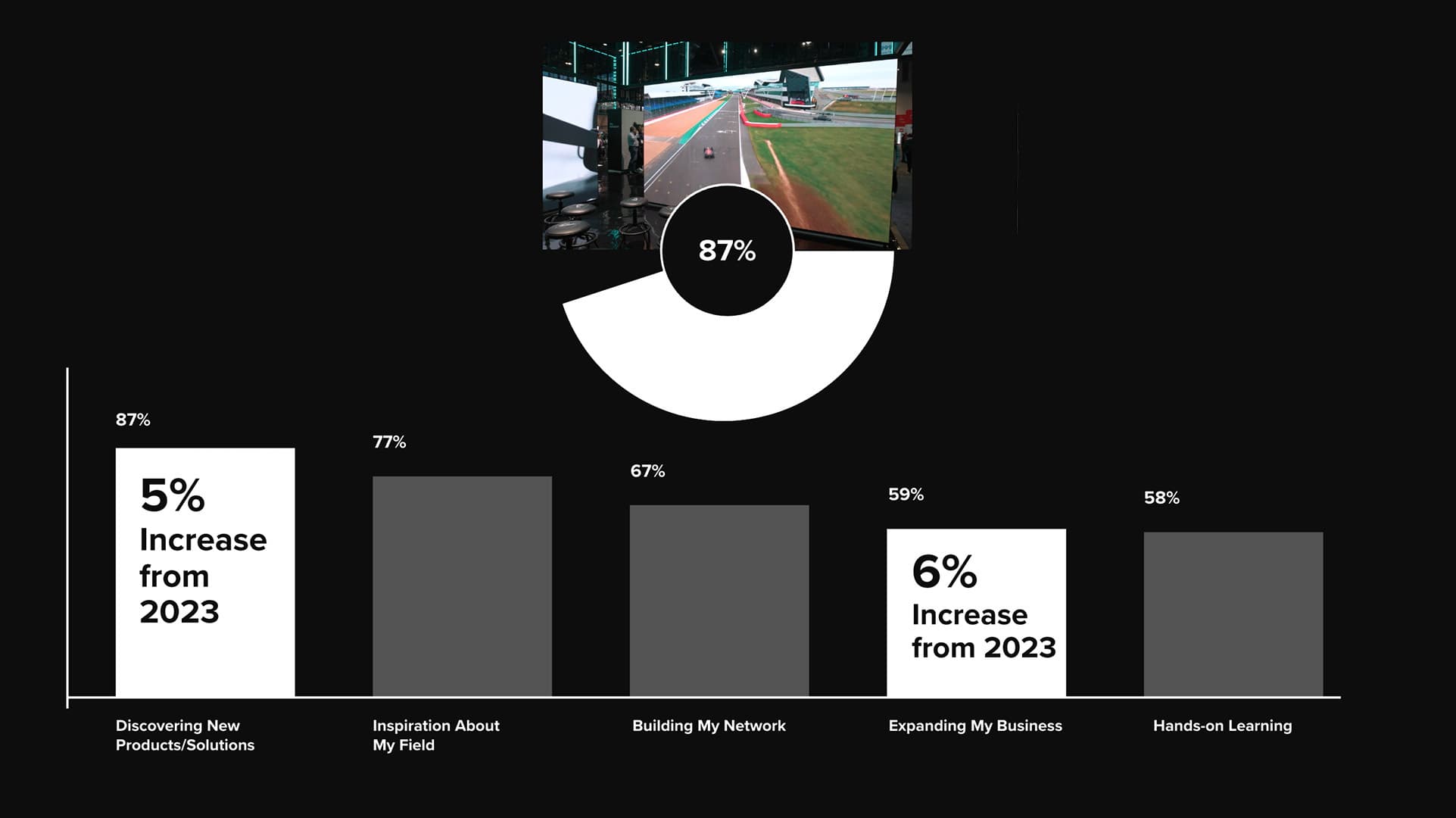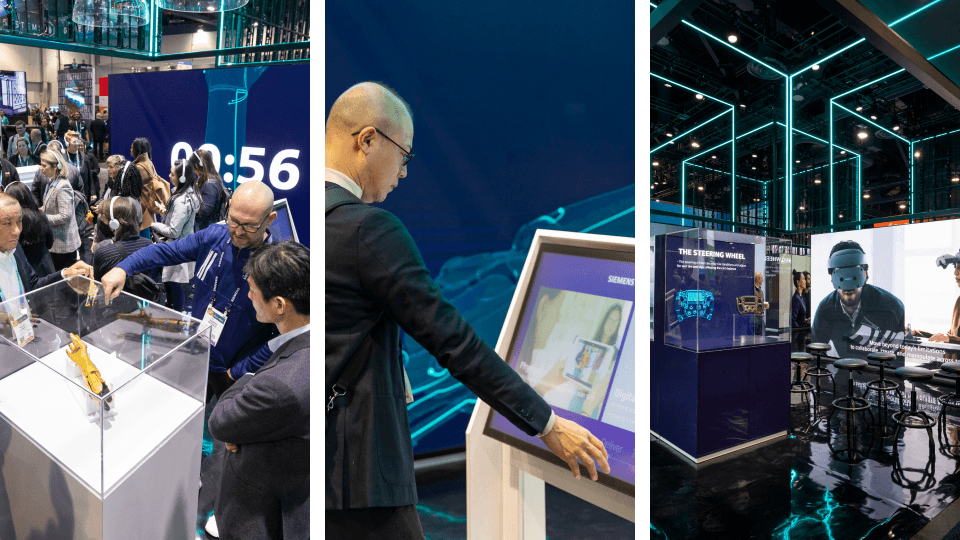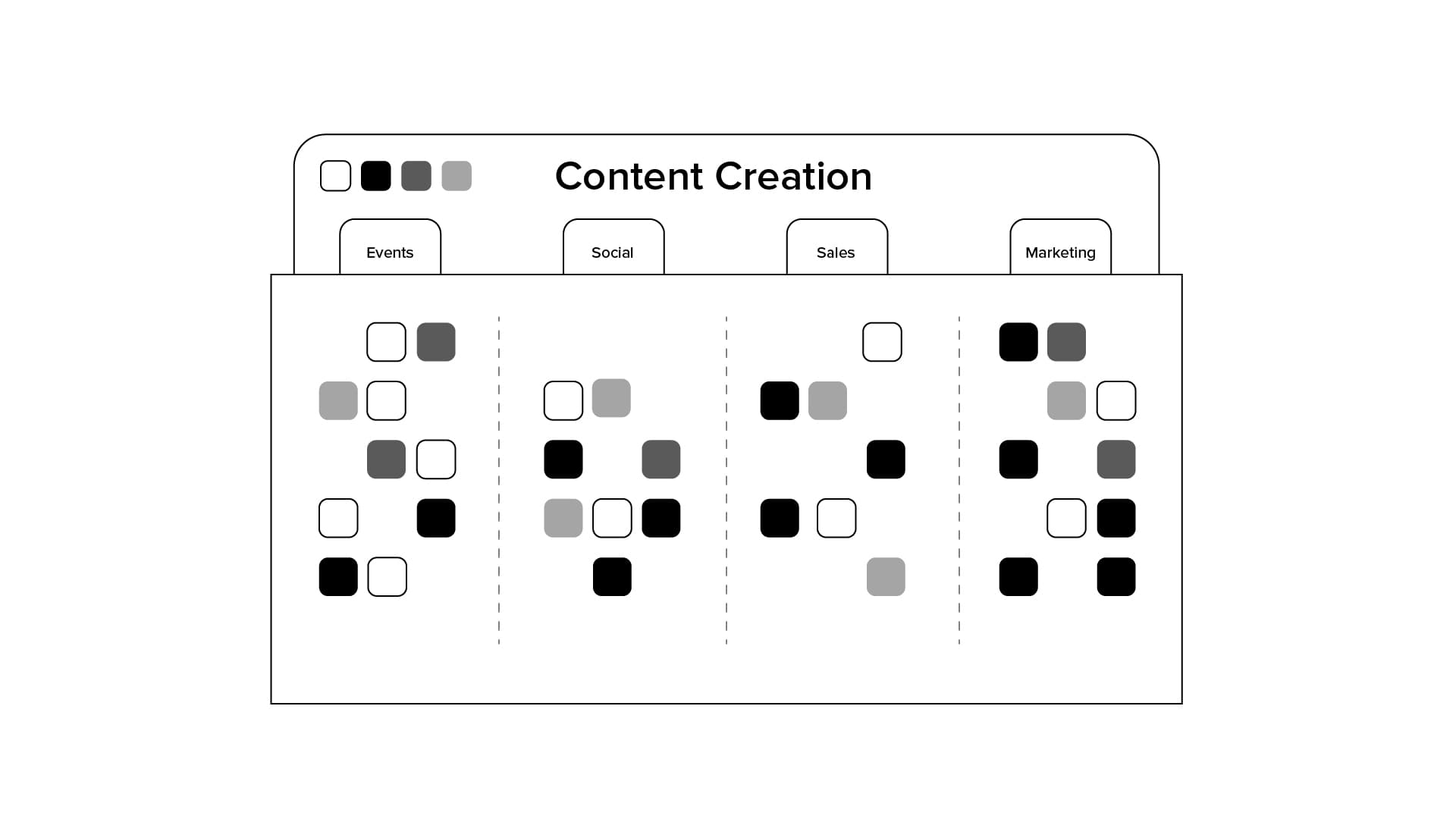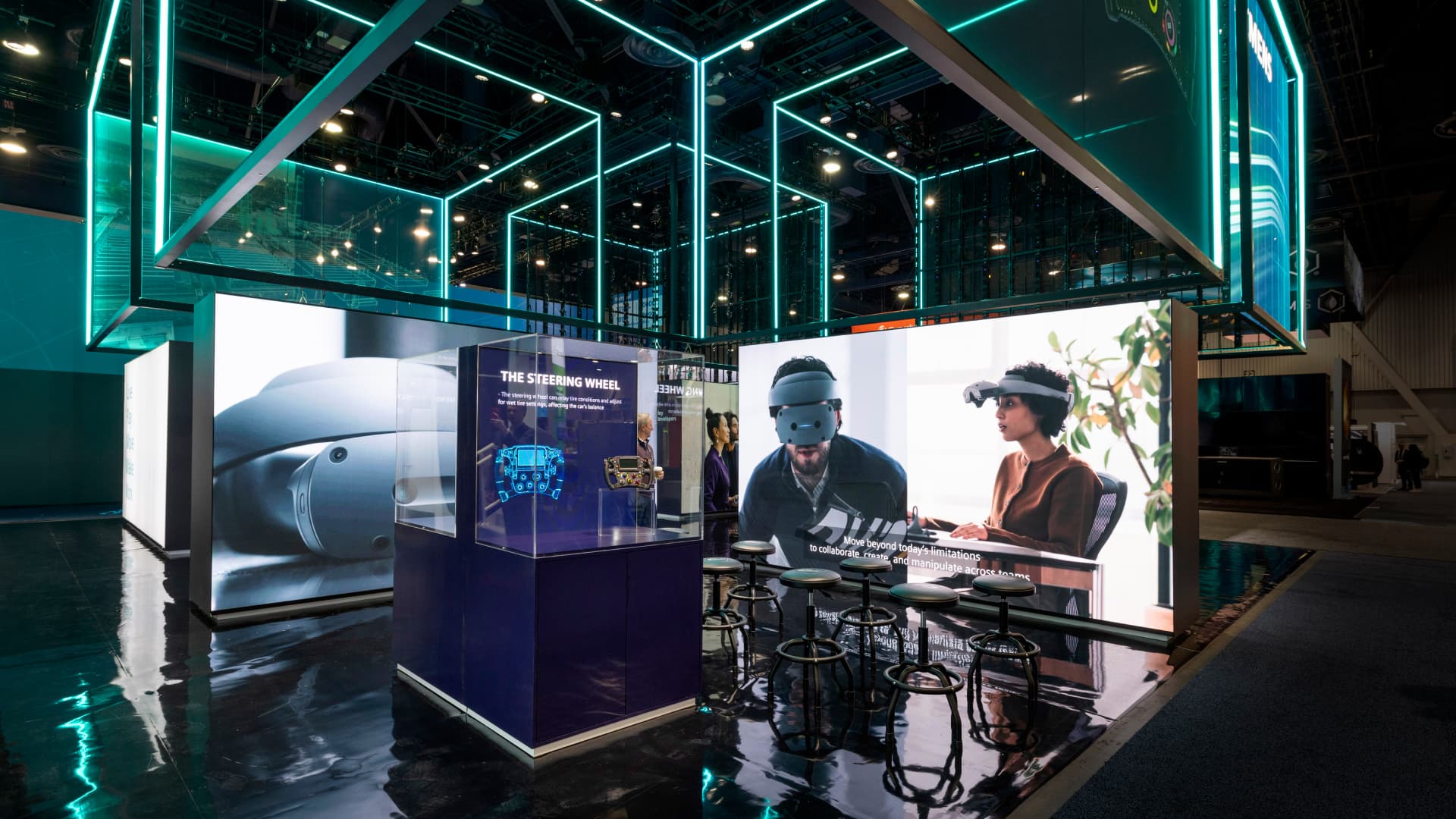The New Trend for Exhibit Experiences

Is your booth telling you something?
It should be. Trade show marketers are finding new success with content-centric trade show experiences, giving rise to the latest trend in exhibit experience design.
Not surprisingly, the age-old art of storytelling is helping companies be more memorable and more persuasive by tapping emotions that do more than make people feel good about a brand—it prompts them to do something about it.
Why is “feeling” so important? Believe it or not, almost all of our purchasing decisions are driven by our emotions, which is why marketers are using content to connect emotionally…and at scale.
95% of our purchase decisions are made based on emotions.
How content wins hearts...and minds
Using content as the centerpiece of your exhibit experience design lets you tell your brand story in a way that connects with your customers (and soon-to-be customers). But it can be challenging to pull off, especially when so many of us are used to promoting products. That’s not completely wrong. “Discovering new products” is a top priority for professionals and they trust in-person events the most for getting this information. So, it’s natural to want to lead with your product. But to move people to action, you need the emotion. Creating this as an experience is its own artform.
When it comes to in-person events, rate the importance of the following elements in your on-site experience.

Your Content Experience Checklist
To help you craft a results-driven, content-centric experience for your next exhibition, we're sharing the checklist we've developed based on our research, experience, and the success we've helped clients achieve. Here's what you need to know.
- Know the story you want your audience to walk away with and get agreement, internally, first.
Before you do anything, think through the big story that you're telling. Why is it important, not just to you, but to your target audience(s)? Of course, your story should reflect the vision you have for your company and fit with your strategy, but it should go deeper to reveal your authentic brand in a touchable, tangible way. And every part of your experience needs to reflect your story. That’s why it is important to get agreement, internally, from all of your stakeholders. - Keep your story simple, memorable, and relevant.
It’s all too easy to let details or jargon get in the way of a good story. Keep your story focused on what matters to your audience. That’s how you engage. Practice the principles of good storytelling. Case studies and stories about customers perform best for content marketers and the best delivery channel for these marketers is live events. In short, using customers to tell your story validates your value without coming across as promotional. No one wants to be sold to.
Source: 14th Annual Content Marketing Survey: Content Marketing Institute/MarketingProfs. - Let the story guide your experience.
Of course, you have booth requirements to achieve the KPIs of your marketing and sales teams. But don't build and design your booth before you’ve figured out your story. Your story should be the foundation of how you’ll achieve your goals, and the experience should feel seamless—from attraction to consideration, to engagement, to understanding and commitment. When the story comes after, the experience gets disjointed. - Create an integrated team that can evaluate the experience from all angles.
An integrated team of creatives—3D and 2D designers, writers, editors, animators, video producers, digital experts and more—start with the story and then work together to ideate on how the story appears everywhere in the exhibit. Not only does that create a richer, more textured experience, it accelerates development and delivery and increases agility. These integrated teams are aligned with your internal workstreams, so everyone stays on the same page.
- Layer the story with multiple engagement experiences.
Using layered touchpoints to tell the story is especially important in a trade show setting where audiences have varied interests, understanding of your brand, and distractions. And whether they spend 10 seconds or 10 minutes in your exhibit, you want your story to be known. Video, interactives, games, exhibitory, demos—it’s all on the table to help tell your story in a way that connects emotionally, while pulling them deeper and deeper into it.
- Think beyond the event.
The beautiful thing about content is it helps you connect with your audience in different channels and different ways beyond your event so you can continue to grow your connections year-round. As you think of your story, and the elements you’ll create to tell it, map out how you can reuse and repurpose these valuable assets. Extending reach and maximizing ROI are critical for every event marketer, and content-centric exhibit experiences have those advantages built in.
Interested in how the Content Experience Checklist helped Siemens significantly grow brand awareness at CES? Read the Case Study.



